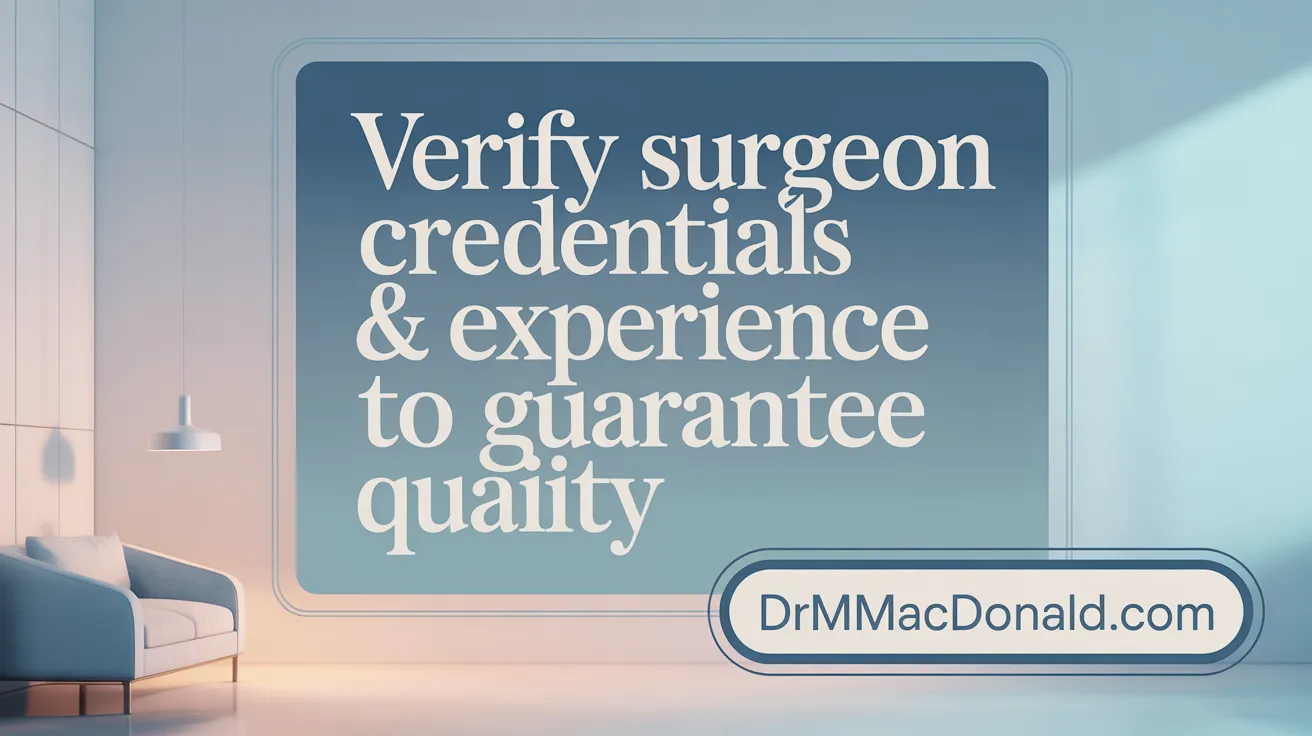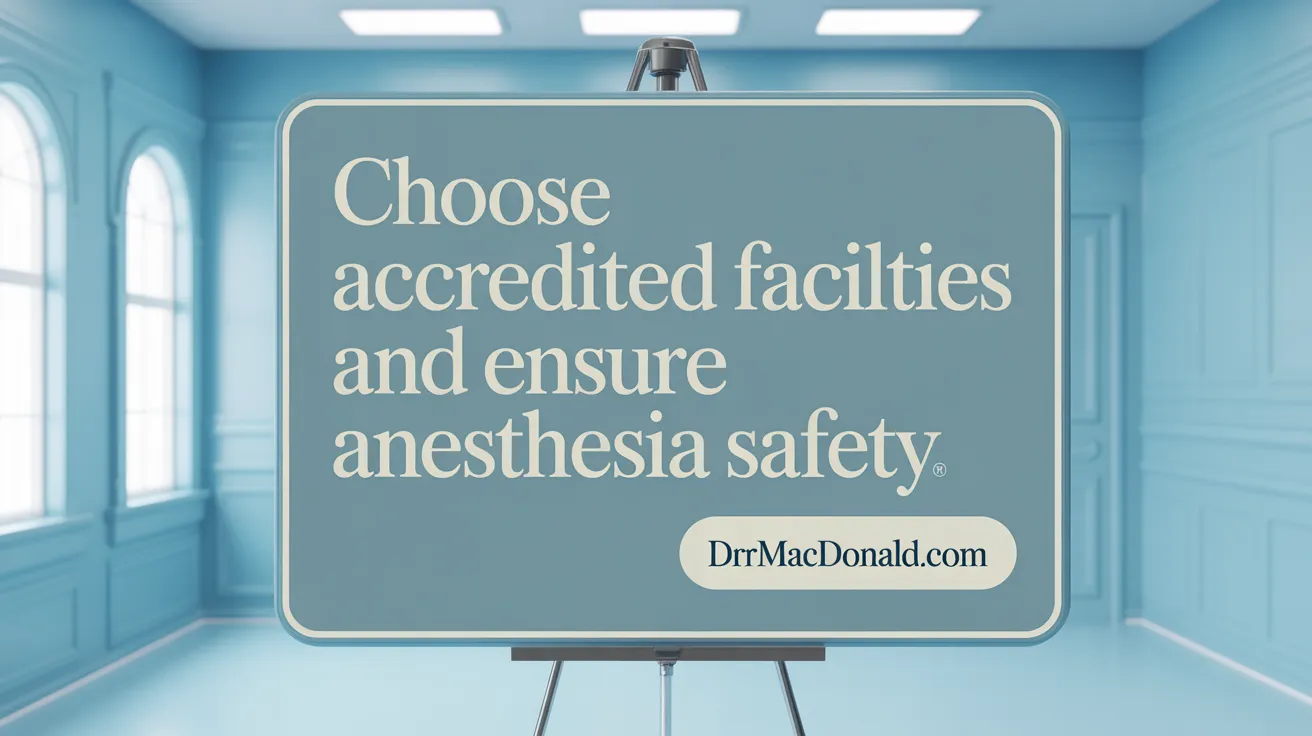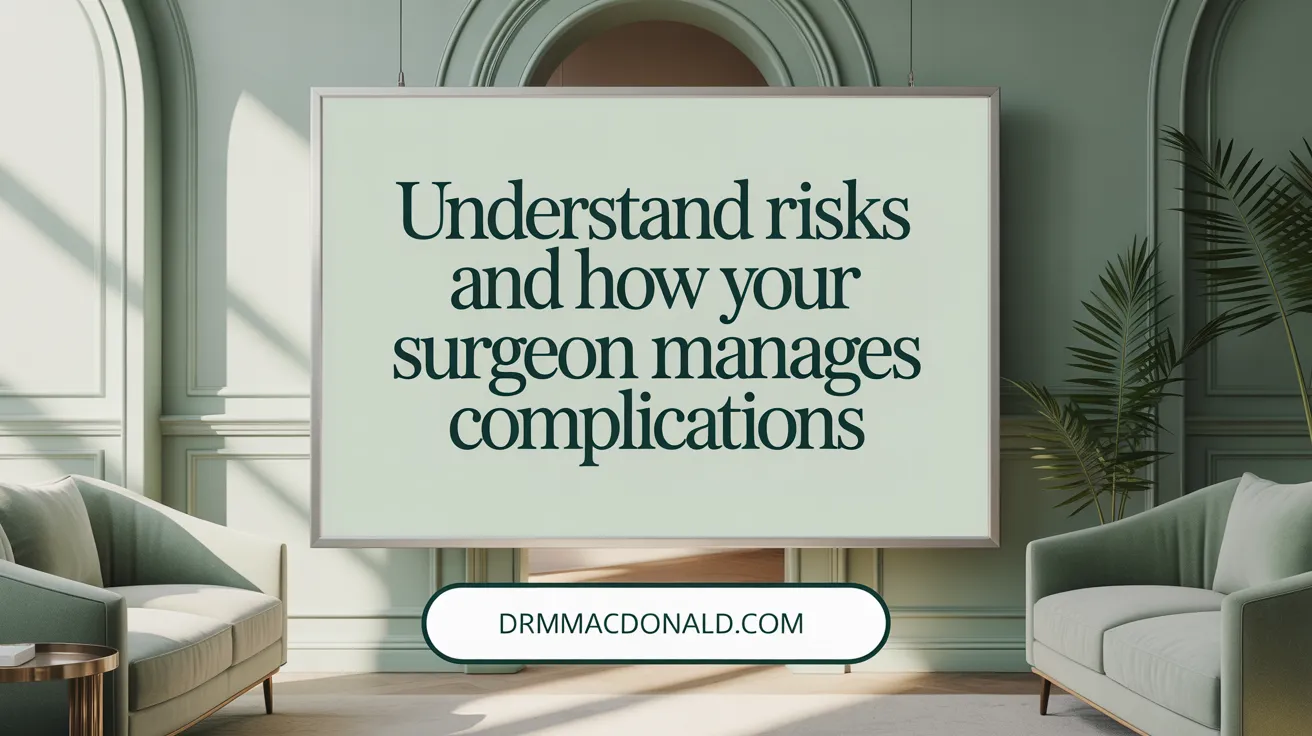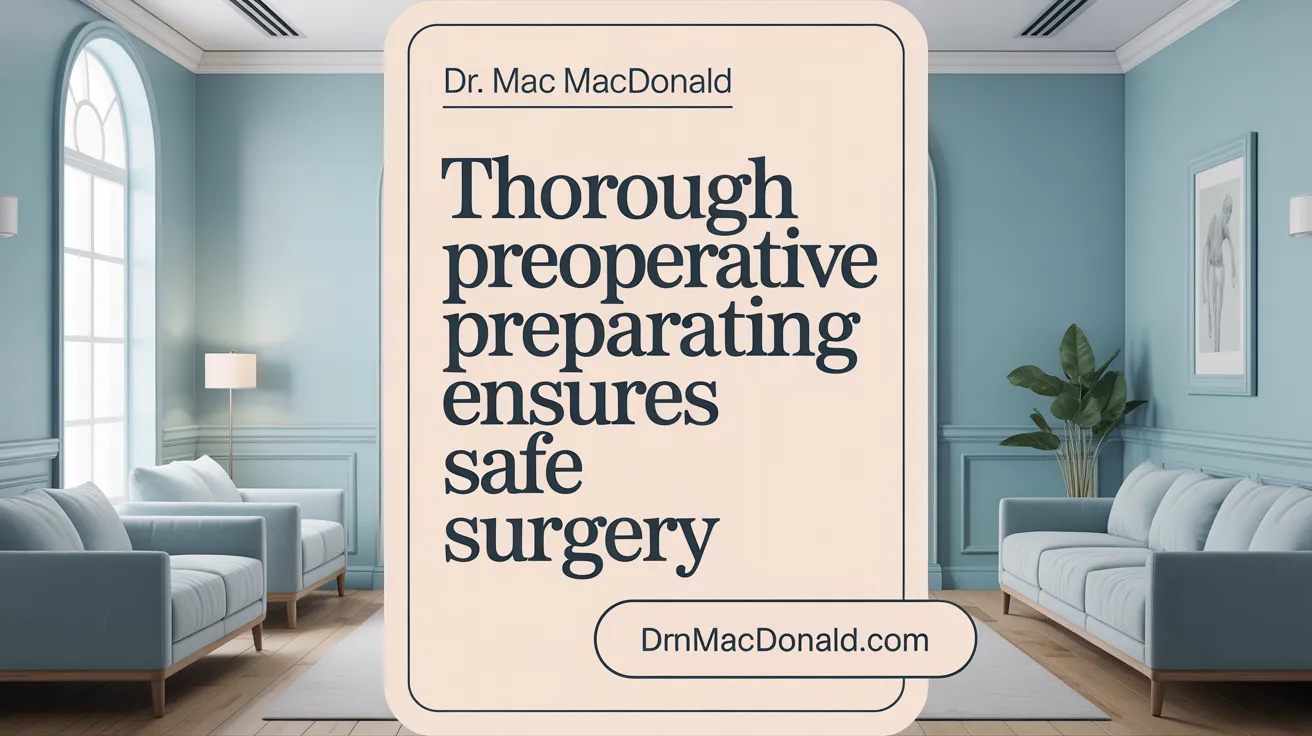Navigating Your Nose Surgery Consultation
Undergoing nose surgery, whether for aesthetic or functional reasons, is a significant step that requires careful planning and informed decision-making. To ensure safety, achieve satisfying results, and navigate recovery effectively, patients must prepare to ask the right questions during their surgical consultation. This guide explores crucial topics and questions to discuss with your surgeon before any nose surgery, helping you enter the process with confidence and clarity.
Verifying Surgeon Credentials and Experience

How do I verify if my surgeon is properly certified and qualified?
To ensure your surgeon is qualified for rhinoplasty, confirm their certification by recognized organizations such as the American Board of Plastic Surgery certification or the American Board of Facial Plastic and Reconstructive Surgery. Membership in professional societies like the American Society of Plastic Surgeons membership also reflects adherence to high standards and ongoing education. Additionally, ask about their specific training in plastic or facial plastic surgery, the number of years they have been practicing, and whether they hold hospital privileges to perform rhinoplasty. These credentials demonstrate formal education, practical experience, and the ability to operate in accredited surgical facilities safely.
Why is a surgeon's experience with rhinoplasty important?
The surgeon’s experience significantly influences the quality and safety of your rhinoplasty. Surgeons who have performed many rhinoplasty procedures develop refined surgical techniques, better manage unexpected issues, and generally achieve more consistent, favorable results. Inquiring about the number of similar surgeries they have performed provides insight into their expertise. Also, asking about their history of complications and how they handle them can reassure you of their preparedness to manage any risks. An experienced surgeon is more adept at tailoring procedures to individual anatomy and goals, helping to maximize outcomes. See questions to ask before rhinoplasty for more details.
| Credential Aspect | Importance | What to Ask Your Surgeon |
|---|---|---|
| Certification by recognized boards | Validates formal qualifications | "Are you board-certified in plastic or facial plastic surgery?" |
| Membership in professional societies | Ensures ongoing education and standards | "Are you a member of the American Society of Plastic Surgeons?" |
| Specific training | Confirms specialized skills | "What specific training have you had in rhinoplasty?" (see surgeon's training and experience) |
| Years of experience | Correlates with surgical skill | "How many years have you been performing rhinoplasty?" |
| Number of procedures performed | Reflects hands-on expertise | "How many rhinoplasty surgeries have you performed?" |
| Hospital privileges | Ensures surgical safety compliance | "Do you have hospital privileges to perform rhinoplasty?" (see hospital privileges for surgeons |
| Complication history and management | Indicates risk handling capability | "What is your complication rate, and how do you handle complications?" (see risks and complications of rhinoplasty) |
Understanding Surgical Facilities and Anesthesia Safety

How important is the accreditation of the surgical facility?
Choosing a surgical facility that is nationally or state-recognized and accredited is crucial for patient safety. Accredited centers adhere to strict standards for cleanliness, emergency preparedness, and quality control. This accreditation ensures the facility is well-equipped to manage emergencies and maintain an optimal surgical environment, which significantly reduces the risk of complications during and after rhinoplasty (Accreditation of surgical facility.
What anesthesia options are available, and how is safety ensured?
Rhinoplasty can be performed under different types of anesthesia including general anesthesia, twilight sedation, or local anesthesia combined with sedation. The choice depends on the complexity of the procedure and the patient's overall health. Safety is prioritized through close monitoring by a qualified anesthesiologist or nurse anesthetist throughout the surgery. Patients should discuss anesthesia risks and the qualifications of the anesthesia team with their surgeon prior to the procedure (Anesthesia safety for rhinoplasty, Anesthesia options for rhinoplasty).
What is the difference between hospital and accredited surgical centers for rhinoplasty?
Rhinoplasty may be performed either in a hospital or a fully accredited outpatient surgical center. Hospitals typically offer extensive resources and specialized emergency services, while accredited surgical centers provide convenience and a controlled, specialized environment for cosmetic procedures. Both settings require adherence to strict safety protocols and should be selected based on surgeon recommendation and patient's health (Hospital privileges and accredited surgical facilities, Surgical facility accreditation.
How long does rhinoplasty surgery usually take, and what preparation is needed?
The surgery generally lasts between 1 to 3 hours, depending on individual complexity. Proper preoperative preparation includes following guidelines about fasting, medication adjustments, and arrival at the facility on time. This preparation ensures anesthesia safety and an optimal surgical experience (Preoperative preparations, Pre Op Rhinoplasty Preparation, Pre-surgery checklist for rhinoplasty).
What surgical environment and protocols should patients expect?
Patients should expect a sterile environment with protocols that include preoperative verification, sterilization of instruments, and monitoring throughout surgery. The surgical team will also provide clear post-operative care instructions to promote healing and minimize risks (Surgical center accreditation, Postoperative care after rhinoplasty.
Assessing Your Candidacy and Understanding the Procedure

How do I know if I am a good candidate for nose surgery?
A qualified plastic surgeon will begin by evaluating your overall health, nasal anatomy, and any functional breathing concerns. Good candidates usually have completed facial development, are in good general health, and have realistic expectations about what rhinoplasty can achieve. This assessment ensures safety and helps tailor the surgery to your needs. For more details, see suitability for rhinoplasty and Rhinoplasty candidate suitability.
What surgical techniques might be used and why?
Rhinoplasty can be performed using either an open or closed technique. In open rhinoplasty, a small incision is made across the columella (the tissue between the nostrils), providing the surgeon with better visibility and access. This technique is often chosen for complex reshaping.
Closed rhinoplasty involves incisions made inside the nostrils, making it less invasive with no visible external scars, suitable for minor corrections. Your surgeon will recommend the best approach based on your specific nasal structure and surgical goals. Learn more about open vs closed rhinoplasty techniques and surgeon's recommended surgical techniques.
Can imaging tools help me understand the likely results?
Many surgeons utilize imaging software or simulation tools during consultation. These tools create visual simulations of potential changes, helping you and the surgeon discuss aesthetic objectives and set realistic expectations. This collaborative approach allows you to see possible outcomes before committing to surgery, aligning your cosmetic and functional goals with feasible results. See resources about visualizing rhinoplasty outcomes and using imaging tools for rhinoplasty planning.
By understanding your candidacy, the surgical techniques available, and using visualization tools, you can make an informed decision about rhinoplasty that matches your personal needs and aspirations. For further reading, consult Rhinoplasty questions and answers.
Discussing Risks, Complications, and How They Are Managed

What risks and complications should I be aware of before surgery?
Rhinoplasty, while generally safe, involves several risks that patients should understand before surgery. Common risks include bleeding during or after the procedure, and infection at the surgical site. Another frequent concern is asymmetry, where the nose may not be perfectly balanced after healing. Patients may also face scarring and breathing difficulties if internal structures are affected. For more information on risks and complications of rhinoplasty and handling rhinoplasty complications, please refer to these resources.
Less common but notable risks include changes in smell or nasal sensation due to nerve damage, as well as potential nerve injury leading to numbness. These complications emphasize the importance of choosing a qualified rhinoplasty surgeon experienced in managing such outcomes.
How will complications be managed if they occur?
A competent surgeon has well-established protocols for managing complications should they arise. This includes prompt recognition and treatment of infections or bleeding and corrective measures for asymmetry or breathing issues. Patients are encouraged to inquire about their surgeon’s complication history and management plan.
If an unsatisfactory result or complication persists, revision surgery may be an option. Surgeons typically discuss policies regarding secondary procedures during the consultation to ensure patients understand the possibilities and limitations of revision surgery. More details on revision rhinoplasty and options if dissatisfied with results can be found here.
Open communication between patient and surgeon about risks and management strategies helps build trust and leads to better preparedness and outcomes. For guidance on questions to ask before rhinoplasty and ensuring safety in rhinoplasty, consult these expert resources.
Planning for Recovery and Postoperative Care

What does the recovery process typically involve?
After rhinoplasty, patients commonly experience swelling, bruising, and soreness, especially in the first 1 to 2 weeks. While initial healing generally happens during this period, the nose can continue to refine and change subtly for up to a year. Most patients are able to return to their normal daily activities within 2 to 3 weeks. However, it’s important to avoid strenuous exercises or heavy lifting until your surgeon advises it is safe to do so. For detailed guidance, see Rhinoplasty recovery expectations.
What kind of postoperative support should I arrange?
Organizing a reliable support system is essential for a smooth recovery. Patients should plan to have someone assist them at home during the first few days after surgery to help with daily tasks and to watch for any complications. Preparing a comfortable recovery space at home and arranging time off work are crucial steps to ensure rest and proper healing. More information on this can be found at Post-operative care for rhinoplasty.
What follow-up care will be necessary?
Surgeons typically schedule several follow-up appointments starting within the first 24 hours after surgery. These visits help to monitor the healing process, remove any nasal dressings or stitches, and address any concerns or complications. Following all postoperative instructions and attending these visits is key to achieving optimal results. For comprehensive details, refer to Follow-up after rhinoplasty.
What activity restrictions and lifestyle modifications should be expected?
Patients are advised to avoid smoking and alcohol both before and after surgery, as these can impair healing. Heavy physical activities, including gym workouts and lifting heavy objects, should be postponed until cleared by your surgeon. Maintaining a healthy diet and proper hydration supports the recovery process. Helpful recommendations can be found at Pre Op Rhinoplasty Preparation and How to prepare for rhinoplasty.
What are some possible side effects during healing?
Common side effects include temporary nasal swelling, bruising around the eyes, nasal congestion, and mild discomfort. These symptoms usually improve gradually over weeks. Rare complications such as bleeding, infection, or breathing difficulties require immediate medical attention and can often be mitigated by choosing a qualified surgeon and following postoperative care carefully. For in-depth information, see Risks and complications of rhinoplasty and Rhinoplasty risks and complications.
Preparing Thoroughly Before Surgery

What preoperative preparations are important to ensure a safe surgery?
Before undergoing rhinoplasty, thorough preoperative preparations are essential to promote safety and successful outcomes. Patients should complete all prescribed laboratory tests, such as blood work and EKGs, well in advance of the surgery date. A comprehensive disclosure of medical history, including previous surgeries, current medications, allergies, and health conditions, allows the surgeon to tailor the plan accordingly.
Medications that increase bleeding risk — including aspirin, ibuprofen, vitamin E, certain herbal supplements like St. John’s Wort and garlic — should be discontinued at least one week before surgery. Nicotine use must cease at least 2 to 4 weeks prior because smoking reduces blood circulation and delays healing. Similarly, alcohol consumption should be stopped at least a week before and following the procedure to minimize complications.
Nutrition plays a vital role, so patients are advised to maintain a healthy, balanced diet and stay hydrated leading up to surgery. Vitamin C supplements starting two weeks before surgery can support wound healing, while adequate rest and light exercise are beneficial for overall physical readiness. Learn more about preparing for rhinoplasty surgery and pre rhinoplasty preparation.
What should I expect on the day of surgery?
On the surgery day, patients should wear comfortable clothing that is easy to remove without pulling over the head. They must arrive free of makeup, nail polish, jewelry, and contact lenses. It’s important to adhere to fasting guidelines provided by the surgeon or anesthesia team, typically involving no food or drink after midnight.
Patients should bring all necessary medical documentation, prescriptions, and identification. Arranged transportation to and from the surgery center is crucial, as patients will not be able to drive post-procedure. Additionally, prior planning for post-operative home assistance ensures a smooth start to recovery.
By following these preparatory steps, patients contribute significantly to the safety and effectiveness of their rhinoplasty experience.
Evaluating Results, Costs, and Setting Realistic Expectations
How can I evaluate a surgeon’s previous work to set realistic expectations?
Reviewing before-and-after rhinoplasty photos of past patients is a crucial step in evaluating a surgeon's skills and typical results. These images reveal the surgeon’s ability to harmonize nasal features with a patient's overall facial structure rather than creating unrealistic or celebrity-inspired outcomes. Patient testimonials also give insight into satisfaction levels and post-surgery experiences.
It's important to remember that rhinoplasty results vary significantly depending on individual anatomy and healing processes. Surgeons use imaging tools for rhinoplasty planning during consultations to help set realistic expectations tailored to each patient.
What should I know about the costs and longevity of rhinoplasty results?
Rhinoplasty costs depend on factors such as surgeon expertise, procedure complexity, and geographic location. Functional rhinoplasty that corrects breathing problems or structural issues might qualify for partial insurance coverage for functional corrections. Conversely, purely cosmetic nose jobs are generally not covered by insurance.
Results are long-lasting, often maintained for 10 to 30 years, but they can change over time due to aging, lifestyle, and environmental factors like sun exposure. Patients should expect that subtle refinements might occur during the first year of healing. For details on long-term appearance after rhinoplasty and potential risks and complications of rhinoplasty, it is helpful to discuss with your surgeon.
Are non-surgical nose jobs a viable alternative?
Non-surgical rhinoplasty uses injectable dermal fillers to reshape the nose temporarily. This approach offers minimal downtime and is useful for minor contour adjustments or testing potential changes before surgery.
However, it doesn’t address structural or functional nasal problems and its effects last only several months. For patients needing significant reshaping or breathing improvements, surgical rhinoplasty remains the appropriate choice.
Preparing Smartly for Successful Nose Surgery
Asking the right questions before any nose surgery empowers patients to make informed choices aligned with their aesthetic and functional goals. Carefully vetting your surgeon's credentials, understanding the procedure and risks, planning your recovery, and setting realistic expectations contribute to a safer experience and satisfactory results. Through thorough preparation and open communication with your surgeon, you can confidently navigate every step of the rhinoplasty journey towards an outcome that enhances both your appearance and well-being.
